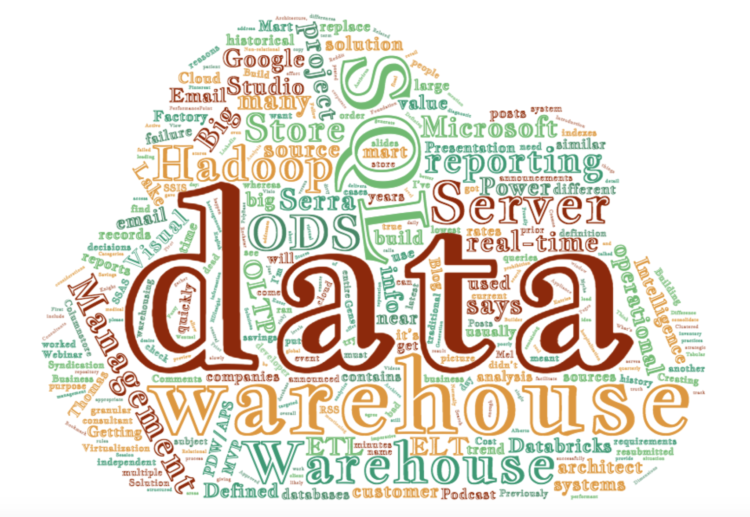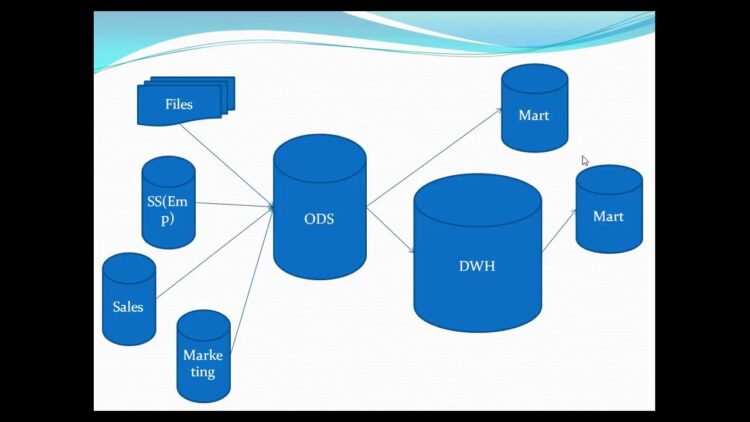As database sizes continue to grow, organizations need storage that can cope with the demands. There is an explosion of data from a huge variety of different sources and many businesses use digital applications that require speed, low latency and scalability.
Businesses need to analyze data if they want to obtain insights that can drive business decisions. These insights can affect every aspect of a business, from how it markets to the kind of service it offers its customers.
Page Contents
What is an Operational Data Store (ODS)?

Source: medium.com
According to GigaSpaces, an Operational Data Store is often loaded many times a day or daily with data representing the current state of the operational systems. Data is stored in the ODS before being transferred to a data warehouse.
The ODS integrates data from a variety of systems of record and as the data is in a single location, it assists with making tactical business decisions.
The ODS is designed for relatively simple queries on a small amount of data. It is like someone’s short-term memory in that it only stores very recent information. It offloads the burden on systems of record and is an ideal solution for businesses looking for near-real-time data.
Traditional ODS challenges
The refresh rate of a traditional ODS is acceptable for day-end reporting but when it comes to digital applications requiring real-time data, this is not sufficient.
With a traditional ODS, handling large data amounts affects latency and the more data sources that are added, the more this problem can escalate. When many API calls are made to data sources for actions, this results in latency and overloads back-end systems. Too many users accessing a traditional ODS concurrently affects performance and scalability.
Real-time processing is still not possible for many businesses. Real-time application programming interfaces (APIs) are necessary if users are to obtain information in real-time from one or more data resources. The API layer makes it possible to gather data from a variety of different sources and offers real-time access to data.
Evolution of the Operational Data Store

Source: youtube.com
With numerous organizations utilizing digital applications, changes have had to take place. Companies are not necessarily replacing what they currently use and starting from scratch. Instead, they are evolving by adding what’s missing to their traditional ODS. This may involve adding a smart cache, event-driven architecture and microservices API.
Project experience matters for businesses that decide on outsourcing IT operations to update their traditional ODS. It takes experience to implement a transformation successfully, using the right solutions to help a business achieve its objectives. Some companies leverage their own employees and niche experts in their transformation.
When there’s an API-first mindset, the focus is on the business data required to deliver operational insights. Executives decide what they need to do to keep their customers happy and this has to be translated to the connected set of systems providing the data. Technical challenges obviously exist but taking a business approach rather than a technical approach can help business owners to make the right decisions when it comes to digital transformation.
If your digital transformation depends on real-time processing of data from many different data sources, you need to explore the potential offered by in-memory computing technologies. The use of an in-memory data grid (IMDG) with existing databases means they don’t need to be ripped out and replaced. It can improve the performance of applications by a significant amount.
What a next-generation data store offers

Source: bloggingheros.com
A next-generation operational data store offers many advantages, including fast performance, low latency, high availability and scalability. Implementing the next-generation ODS has helped many businesses to overcome limitations and deliver innovative improvements that increase customer satisfaction and profitability.
Fast performance
By inserting a high-performance, distributed in-memory core between the API management layer and the back-end systems, many of the challenges of the traditional ODS disappear. There is no impact on performance despite unexpected peaks in user volume. Back-end systems don’t have to work too hard and customers get quick response times.
High availability
Today customers want 24/7 availability. Businesses that have to manage many systems of record face the problem of one of them going down. By decoupling the API layer from systems of record, applications will keep working even if a system of record is not available.
Scalability
The ability to scale is essential for any business that wants to embrace digital transformation. Better scaling supports increased workloads and throughputs. Being able to scale to support peak times means experiencing operational efficiency at all times.
Predictive modeling
As real-time data or close to real-time data becomes available, businesses are able to make better decisions. They can obtain the insights they need when they analyze the data. Predictive modeling based on real-time insights helps in just about every business area, including sales, marketing and customer service.
Remote data center synchronization

Source: techrepublic.com
Global organizations may choose remote sites for their data centers. This may be because they need to follow certain regulations or to offer more availability. A new generation operational data store makes synchronizing their remote centers possible.
Handles on-premise and in the cloud deployments
A new generation ODS offers businesses more flexibility whether they have data in the cloud, on their premises, or a combination of the two. A next-generation ODS has no difficulty dealing with hybrid deployments and there is no effect on performance.
Options for self-service
Businesses can offer customers options for self-service. This can dramatically improve the productivity of employees as it frees them from doing tasks customers can do for themselves.
Conclusion
Everything a business can do to improve customer experience increases the chances of growing and retaining a customer base. A next-generation ODS offers more flexibility, speed, agility and scalability. It helps to improve business processes and enables you to offer excellent customer service. The possibilities are endless and keep evolving. Ultimately, making the right transformations will help your business to thrive in a competitive marketplace.





